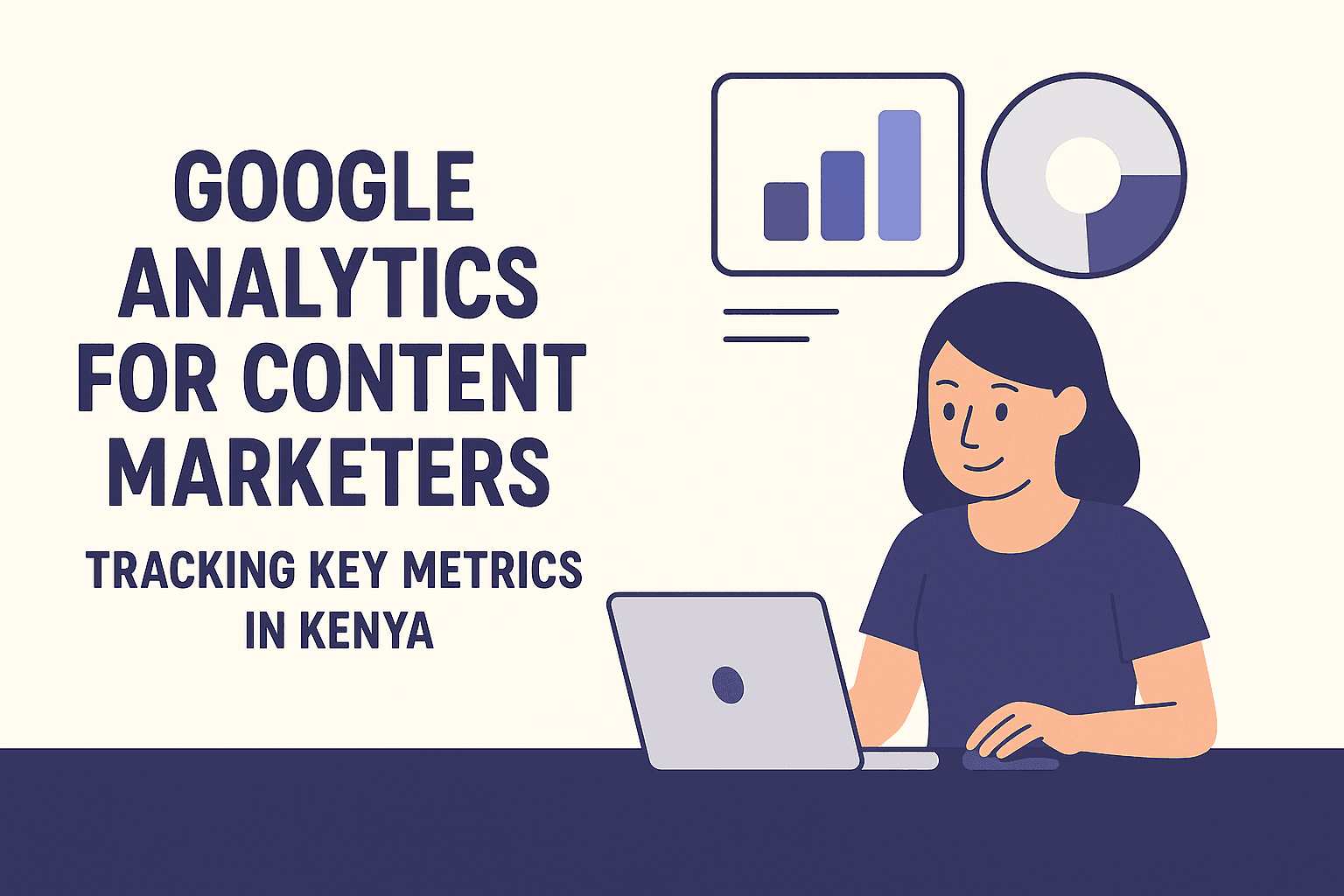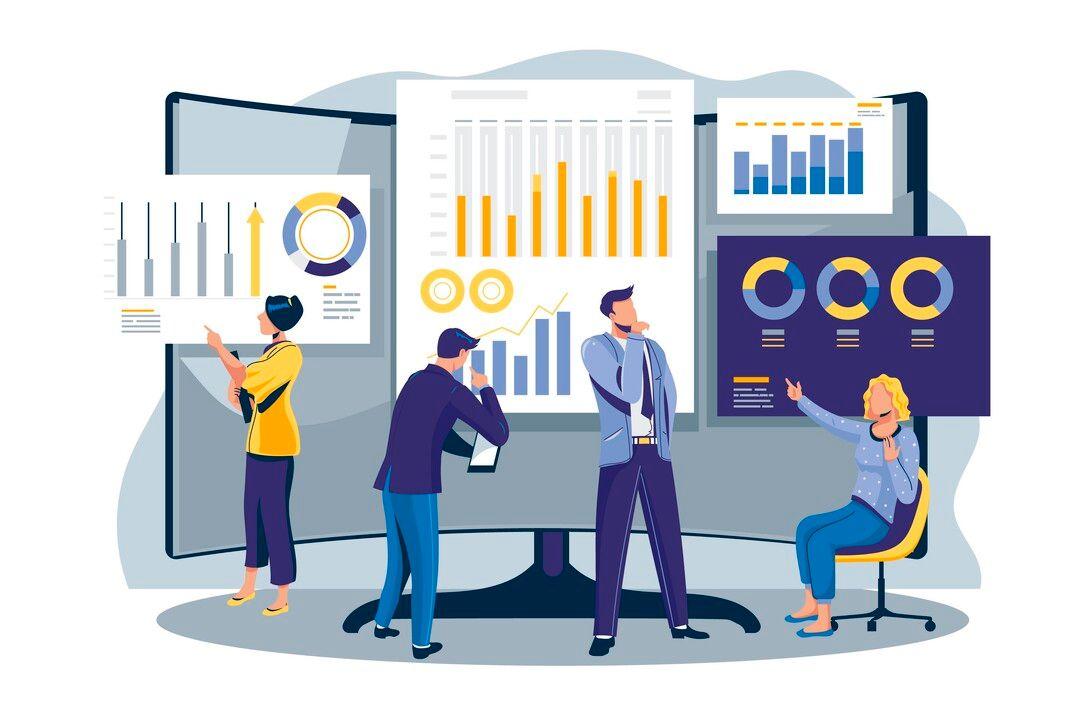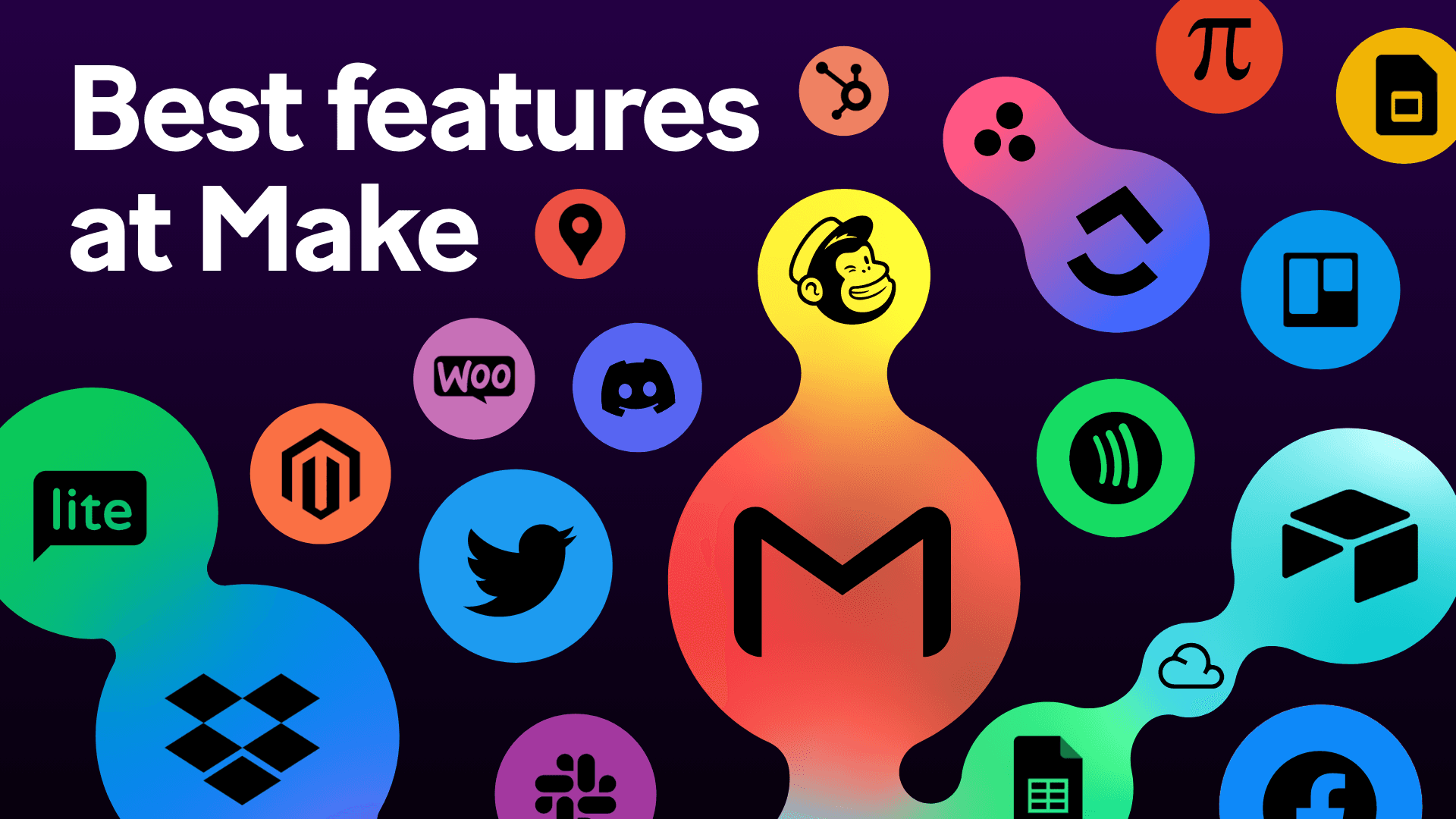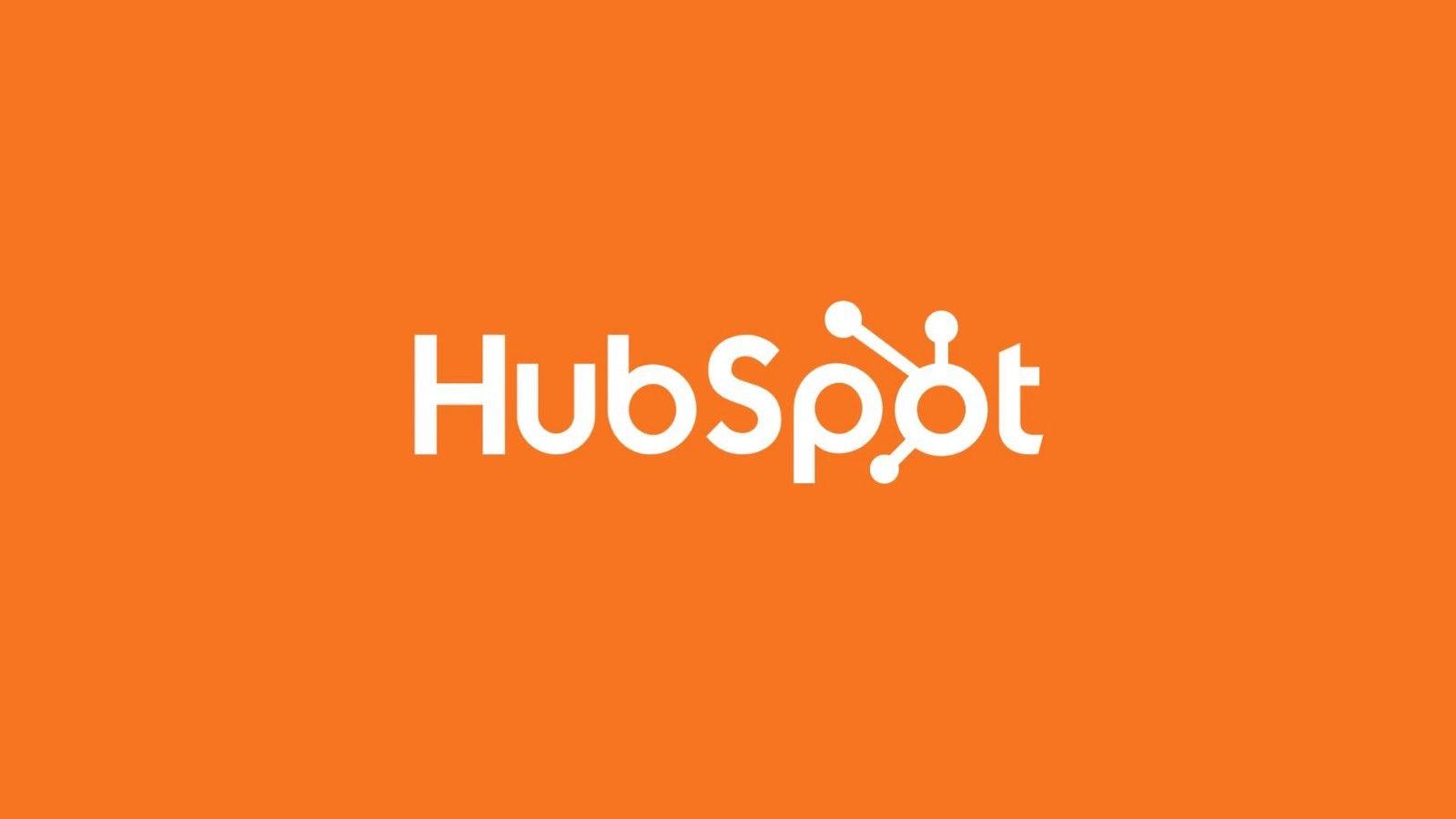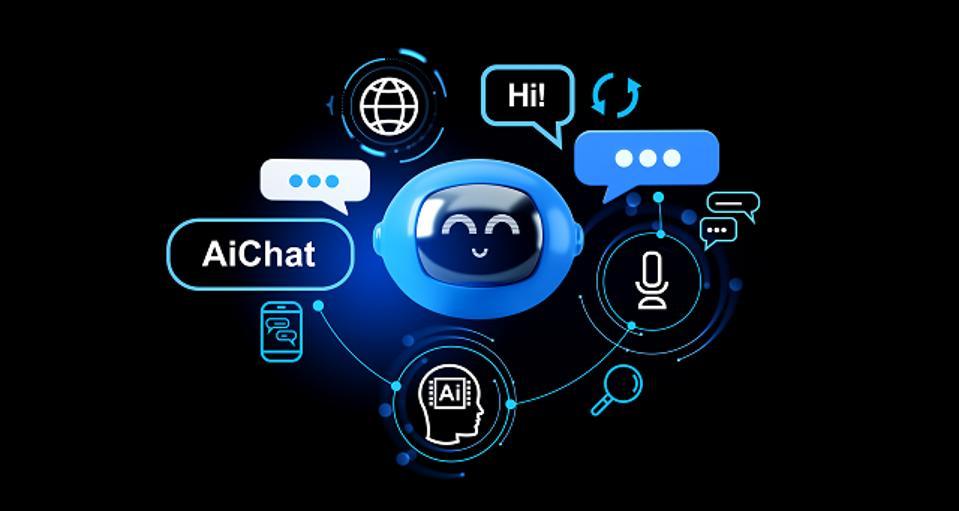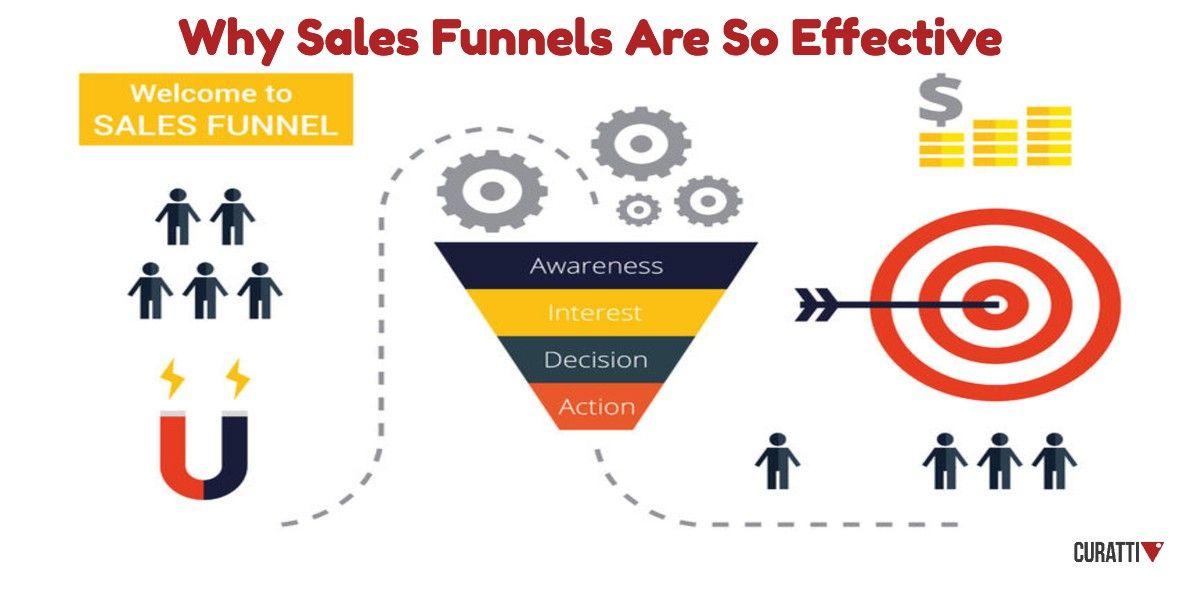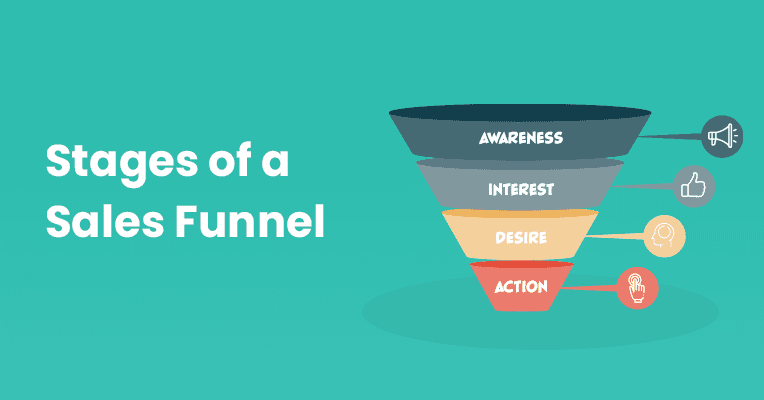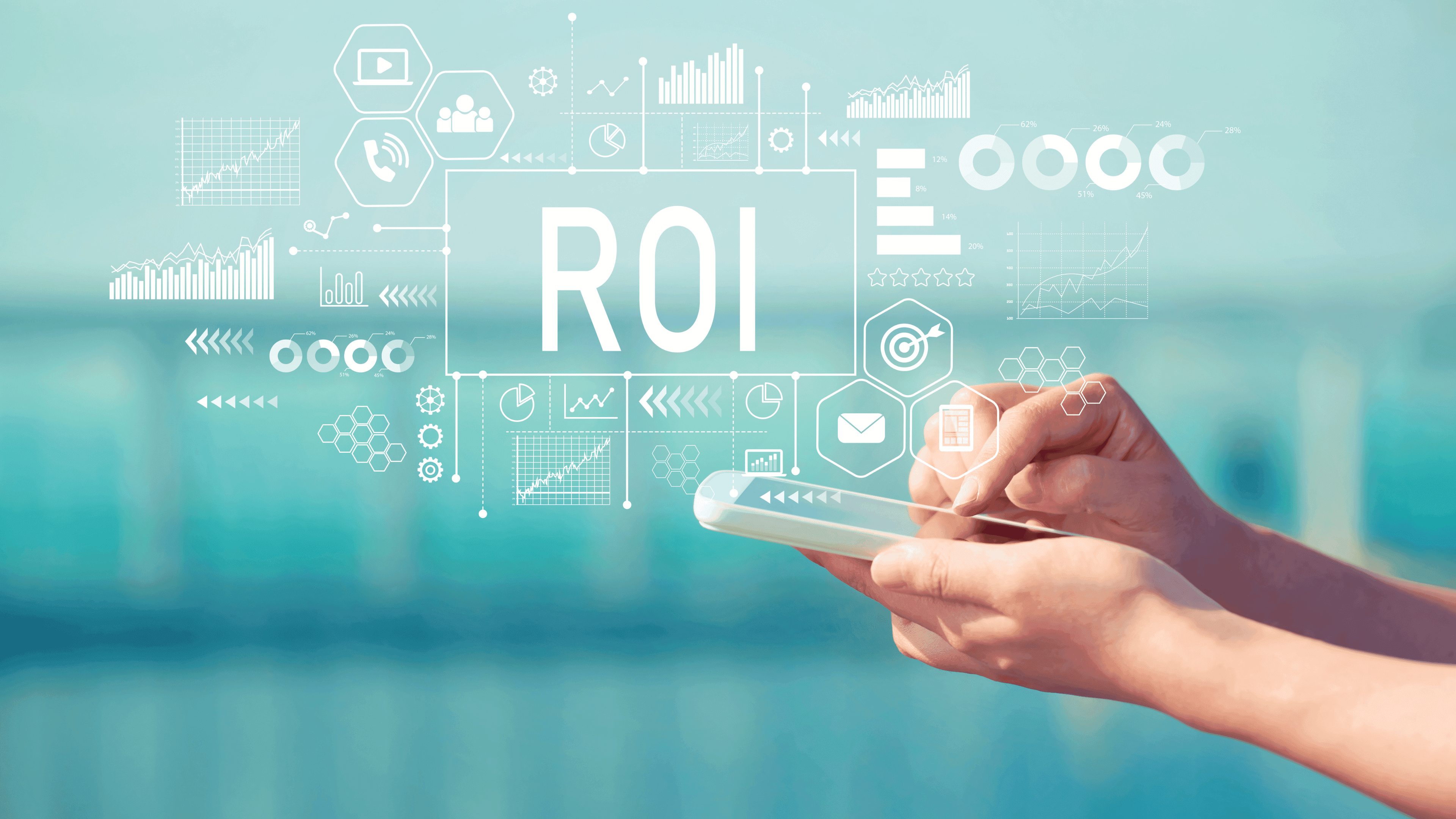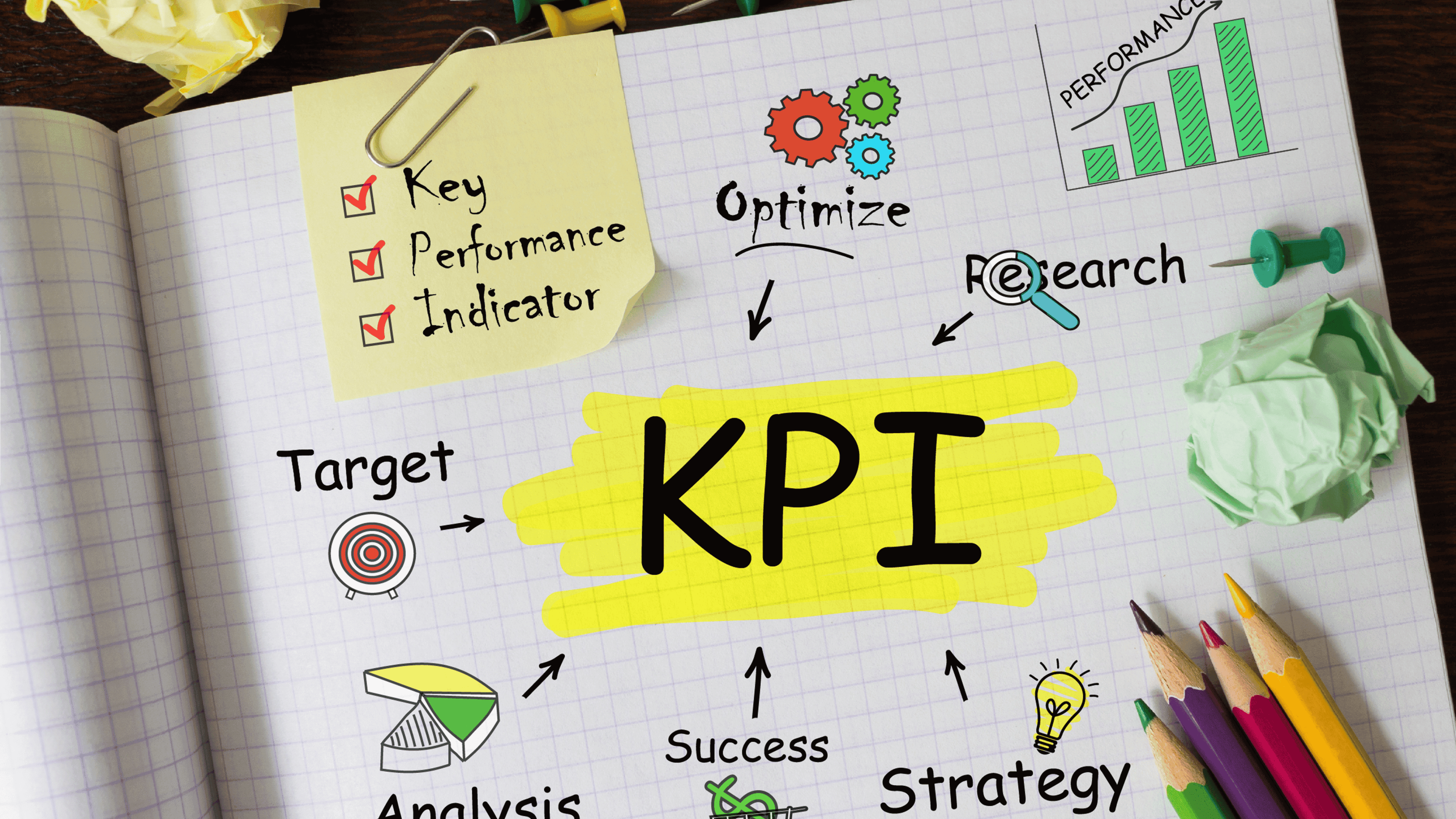
Carolyne Njunge
Shiftpulse Marketers
Sales Funnel vs. Marketing Funnel: Key Differences and Synergies
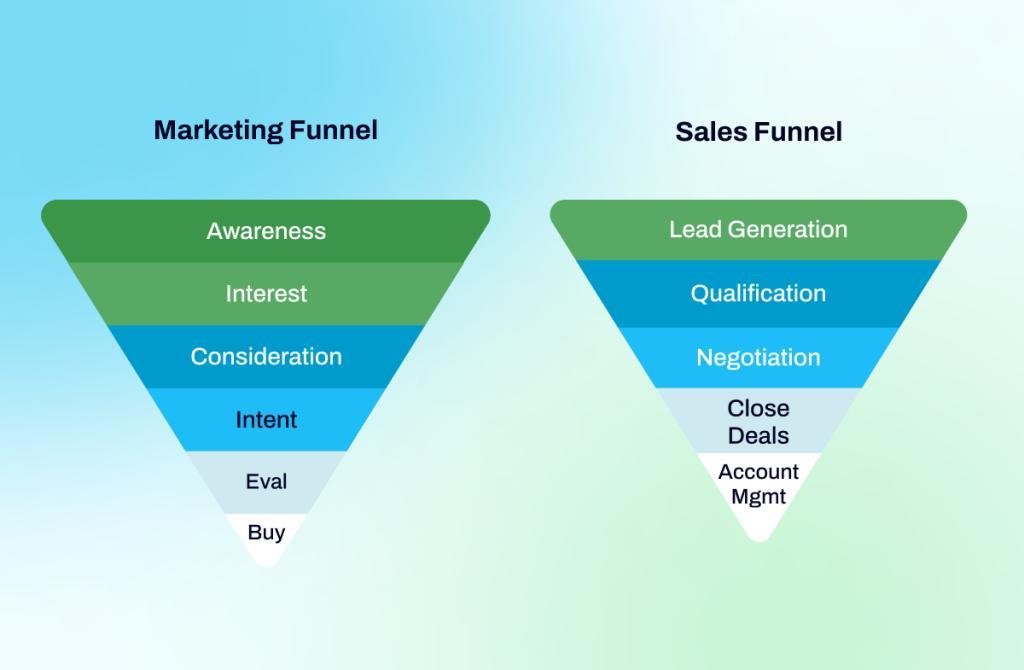
TL;DR: Sales and marketing funnels guide potential customers through different stages of engagement and conversion. The marketing funnel focuses on awareness, consideration, conversion, and loyalty, while the sales funnel emphasizes interest, decision, action, and retention. Businesses track key metrics like conversion rates, CTR, CPC, and CLV to optimize performance.
To understand the modern concept of funnels, it's helpful to look back at the AIDA model, a classic marketing model developed in 1898 by Elias St. Elmo Lewis1. The AIDA model, which stands for Awareness, Interest, Desire, and Action, outlines the cognitive stages an individual goes through during the buying process2. This model has been used for over a century and provides a foundation for understanding how businesses can guide customers toward a purchase2.
Knowing your audience is crucial for optimizing both sales and marketing funnels. By understanding their needs, preferences, and behaviors, you can tailor your content and messaging to resonate with them effectively3. This customer-centric approach is essential for maximizing engagement and driving conversions.
What is a Marketing Funnel?
The marketing funnel visually represents the customer journey from the moment they first become aware of your brand to when they become a loyal customer and advocate. It provides a framework for marketers to engage customers effectively at each stage. While different models exist, with some outlining three or five stages, a common representation of the marketing funnel includes four key stages: 4
- Awareness: This is the first stage where potential customers become aware of your brand or product. This can happen through various channels, such as social media, online ads, blog posts, and search engine results. Marketers often employ "creative disruption" techniques to capture attention in this stage, using unexpected or provocative messages to make their brand stand out4. To further enhance awareness, businesses utilize lead magnets, which are incentives offered to potential customers in exchange for their contact information. These can include ebooks, whitepapers, webinars, free trials, and exclusive discounts3.
- Consideration: Once prospects are aware of your brand, they enter the consideration stage, where they actively evaluate your products or services as solutions to their needs. They might compare your offerings with competitors, read reviews, and seek more information to make informed decisions4.
- Conversion: At this stage, potential customers are ready to take action. This could involve signing up for a newsletter, requesting a demo, or adding a product to their cart4.
- Loyalty: After converting a customer, the focus shifts to building customer loyalty and encouraging repeat purchases. This involves nurturing relationships, providing excellent customer service, and offering ongoing value to retain customers and foster advocacy7.
It's important to note that the five-stage AICIP model (Awareness, Interest, Consideration, Intent, Purchase) also provides a valuable framework for understanding the customer journey5. This model emphasizes the importance of building intent before a purchase, highlighting the need for targeted messaging and personalized experiences to guide customers toward a decision.
What is a Sales Funnel?
The sales funnel is a visual representation of the process through which a business guides potential customers toward making a purchase. It outlines the steps taken by the sales team to convert leads into paying customers. A high sales funnel progression rate, which measures how effectively leads move from one stage of the sales funnel to the next, indicates a healthy sales funnel and efficient sales processes8. While the specific stages may vary depending on the business model, a typical sales funnel includes:
- Awareness: The sales funnel begins with prospects becoming aware of your company and its offerings. However, in the sales funnel, this awareness is often generated through more targeted efforts, such as direct outreach, sales calls, and personalized emails9.
- Interest: Once prospects express interest, the sales team focuses on nurturing that interest and building relationships. This may involve providing more detailed information, answering questions, and addressing concerns. Personalization is key in this stage, as tailoring messaging to each lead helps build a connection and make them feel valued, ultimately improving conversion rates10.
- Decision: In this stage, prospects actively evaluate your offerings and compare them with alternatives. The sales team plays a crucial role in providing support, addressing objections, and guiding prospects toward a purchase decision10.
- Action: This is the final stage where prospects decide whether to make a purchase. The sales team focuses on closing deals, securing contracts, and ensuring a smooth transaction process10.
- Retention: The sales funnel also emphasizes customer retention. This involves maintaining relationships, providing ongoing support, and identifying opportunities for upselling or cross-selling10.
To cater to different customer needs and preferences, businesses often employ various sales funnel models. These include:
- Squeeze Page Funnel: This model focuses on capturing leads by offering valuable content in exchange for contact information12.
- Webinar Funnel: This model utilizes webinars to educate and engage prospects, generating leads and building relationships12.
- Product Launch Funnel: This model builds anticipation and excitement around a new product release, driving pre-orders and initial sales12.
Measuring the effectiveness of a sales funnel involves tracking key metrics, such as:
- Conversion Rate: This measures the percentage of leads that successfully convert into customers13.
- Click-Through Rate (CTR): This tracks the percentage of people who click on a link or ad compared to the number of people who see it13.
- Cost-Per-Click (CPC): This measures how much money is spent to earn a click on an ad13.
- Customer Lifetime Value (CLV): This measures the total revenue generated by a customer throughout their entire relationship with your company13.
By monitoring these metrics, businesses can identify areas for improvement and optimize their sales funnels to maximize conversions and revenue.
Key Differences Between Sales and Marketing Funnels
While both funnels share some similarities, there are key distinctions:
Feature
Marketing Funnel
Sales Funnel
Focus
Attracting and educating a broad audience
Converting qualified leads into customers
Scope
Long-term brand building and customer relationships
Short-term sales cycle and closing deals
Metrics
Website traffic, social media engagement, lead generation
Conversion rates, deal size, revenue
Tactics
Content marketing, SEO, social media, paid advertising
Sales calls, demos, email outreach, proposals
Timeline
Longer timeframe, nurturing leads over time
Shorter timeframe, focused on immediate action
Audience
Wider audience, targeting various segments
Narrower audience, focusing on qualified leads
For instance, in terms of metrics, marketing funnels primarily track website traffic, social media engagement, and lead generation to assess the reach and impact of their brand-building efforts. In contrast, sales funnels focus on conversion rates, deal size, and revenue to evaluate their effectiveness in closing deals and generating revenue.
Synergies Between Sales and Marketing Funnels
Despite their differences, sales and marketing funnels are not independent entities. They work together synergistically to drive business growth. Here's how:
- Lead Generation: Marketing funnels generate leads that are then passed on to the sales team for qualification and conversion. Effective marketing campaigns attract and nurture prospects, providing the initial momentum for the sales process. B2B sales are rarely made on the first touchpoint, highlighting the importance of nurturing leads through various stages14.
- Lead Nurturing: Both funnels emphasize lead nurturing, albeit with different approaches. Marketing nurtures leads through valuable content and automated communication, while sales provides personalized support and addresses specific concerns15.
- Data Sharing: Sales and marketing teams share data and insights to improve their strategies. Marketing can provide sales with information about lead behavior and preferences, while sales can provide feedback on marketing campaign effectiveness16.
- Customer Relationship Management (CRM): CRM systems play a crucial role in managing and optimizing both funnels. They help track customer interactions, automate communication, and provide valuable insights into customer behavior. By effectively utilizing CRM, businesses can identify areas for improvement in their sales funnel strategy and maximize conversions10.
- Customer Retention: Both funnels contribute to customer retention by fostering relationships and providing ongoing value. Marketing focuses on building brand loyalty, while sales focuses on customer satisfaction and repeat purchases7.
Aligning marketing and sales strategies is crucial for increasing ROI. By ensuring a seamless transition of leads from the marketing funnel to the sales funnel, businesses can maximize their conversion rates and achieve their revenue goals16.
Case Studies: Successful Sales and Marketing Funnel Integration
Several companies have successfully integrated their sales and marketing funnels to achieve remarkable results. Here are a few examples:
- Cisco: Cisco effectively utilizes its website to guide prospects through different stages of the funnel. They offer various entry points for their diverse target audience, allowing them to easily navigate product pages and discover solutions. Their use of high-quality case study videos and independent reports builds credibility and trust. They also offer on-demand webinars featuring Cisco experts, providing valuable insights and further engaging prospects17.
- Huel: Huel leverages its strong Instagram presence to drive sales. Their Instagram Shop channel allows customers to browse and purchase products directly from the platform. They provide detailed landing pages with FAQs and expert statements to help customers make informed decisions. Throughout the customer journey, they offer upselling opportunities and encourage email newsletter signups to further nurture leads18.
These case studies demonstrate how effective integration of sales and marketing funnels can lead to increased brand awareness, engagement, and conversions.
Conclusion
Sales funnels and marketing funnels are distinct yet interconnected processes that drive business growth. The marketing funnel focuses on attracting a broad audience and nurturing them through valuable content and engaging experiences. The sales funnel, on the other hand, focuses on converting qualified leads into customers through personalized communication and targeted efforts.
By understanding the key differences and synergies between these funnels, ShiftPulse marketers can develop more effective strategies. This includes aligning marketing and sales efforts, sharing data and insights, and utilizing CRM systems to track and optimize the customer journey. By implementing these strategies, ShiftPulse can maximize conversions, build stronger customer relationships, and ultimately drive revenue growth.
Works cited
1. How to Use the AIDA Model to Win Customers - Mailchimp, accessed on February 14, 2025, https://mailchimp.com/resources/aida-model/
2. The AIDA model and how to apply it in the real world - examples and tips - Smart Insights, accessed on February 14, 2025, https://www.smartinsights.com/traffic-building-strategy/offer-and-message-development/aida-model/
3. Conversion Funnel Optimisation: 10 Ways to Convert More - Analytics Platform - Matomo, accessed on February 14, 2025, https://matomo.org/blog/2024/01/conversion-funnel-optimisation/
4. What is a Marketing Funnel? How They Work, Stages & Examples - Amazon Ads, accessed on February 14, 2025, https://advertising.amazon.com/library/guides/marketing-funnel
5. Marketing Funnel: Stages, Strategy, and Examples for 2025 - Omnisend, accessed on February 14, 2025, https://www.omnisend.com/blog/email-marketing-funnel/
6. Understand the Steps in the AIDA Model Hierarchy - Corporate Finance Institute, accessed on February 14, 2025, https://corporatefinanceinstitute.com/resources/management/aida-model-marketing/
7. Sales Funnels vs. Marketing Funnels: What's the Difference? - MNTN, accessed on February 14, 2025, https://mountain.com/blog/sales-funnel-vs-marketing-funnel/
8. What Is the Sales Funnel Progression Rate: How to Measure & Improve Effectively?, accessed on February 14, 2025, https://www.sightfull.com/resources/glossary/sales-funnel-progression-rate/
9. What is a Sales Funnel and How to Build an Effective Funnel ..., accessed on February 14, 2025, https://www.salesforce.com/in/blog/sales-funnel/
10. What is a Sales Funnel? Stages, Strategy & Process - Cognism, accessed on February 14, 2025, https://www.cognism.com/blog/sales-funnel
11. 5 Signs of a Successful Sales Funnel (Plus Metrics!) - Breadcrumbs.io, accessed on February 14, 2025, https://breadcrumbs.io/blog/successful-sales-funnel/
12. 12 Types of Sales Funnels for Digital Marketing Success - OptimizePress, accessed on February 14, 2025, https://www.optimizepress.com/types-of-sales-funnels/
13. 15 Sales Funnel Metrics & KPIs to Measure Performance - MNTN, accessed on February 14, 2025, https://mountain.com/blog/sales-funnel-metrics/
14. How to Build a B2B Marketing and Sales Funnel That Grows Your ROI - Neil Patel, accessed on February 14, 2025, https://neilpatel.com/blog/b2b-marketing-sales-funnel/
15. Marketing Funnel and Sale Funnel: The Complete Guide - Fordeer Commerce Blog, accessed on February 14, 2025, https://blog.fordeercommerce.io/marketing-funnel-and-sale-funnel-the-complete-guide/
16. Understanding the Differences: Sales vs. Marketing Funnels - Kylas CRM, accessed on February 14, 2025, https://kylas.io/en/sales-vs-marketing-funnel
17. 10 Examples for Creating a Profitable B2B Sales Funnel | INFUSE, accessed on February 14, 2025, https://infuse.com/insight/b2b-sales-funnel/
18. 5 Real Examples of Sales Funnel in eCommerce + Best Practices [2025] - GemPages, accessed on February 14, 2025, https://gempages.net/blogs/shopify/ecommerce-sales-funnel-examples
